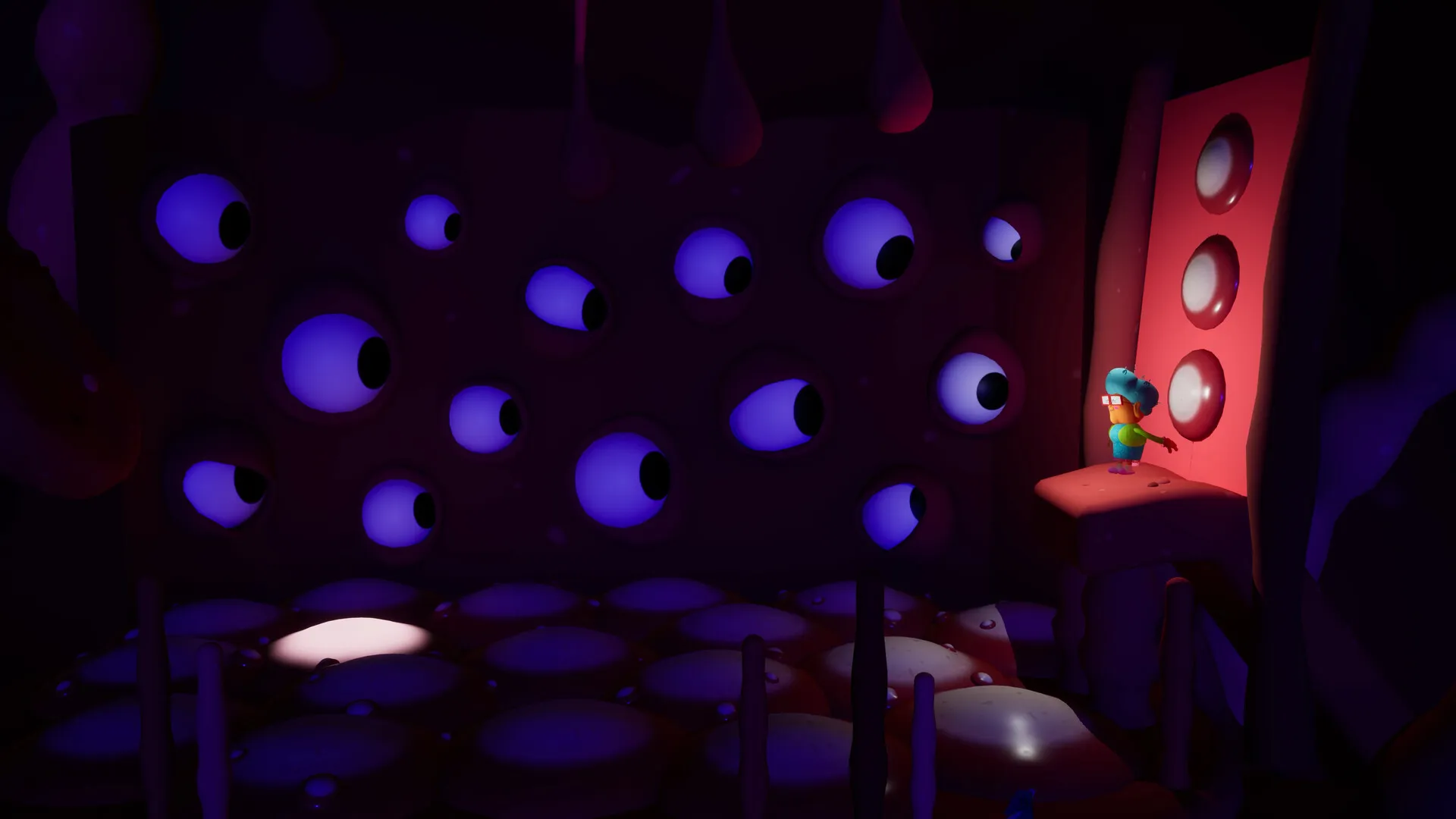The game begins with a familiar, quiet domestic scene. You are Grandma, pottering around your house, when a phone call shatters the peace. Your son needs a last-minute babysitter so he and his wife can escape to a nude beach for the weekend.
Before you can object, a baby is quite literally tossed into your life, and the ungrateful parents vanish. Anyone expecting a heartfelt childcare simulator will be immediately disoriented. The baby is less a character to be nurtured and more a passive observer to the impending chaos. Your true objective is not to care for your grandchild but to simply get on with your household chores.
This sets up the central dynamic of the game. It is a physics-based sandbox where the most mundane tasks are designed to spiral into utter mayhem. The simple act of doing laundry or making a cup of tea becomes an exercise in catastrophic destruction.
Every object in the house is a potential projectile, every surface is ready to be smashed, and every action has an unpredictable, and usually disastrous, reaction. The game’s appeal lies in this gleeful commitment to absurdity, turning a quiet suburban home into a personal demolition zone where the only goal is to check items off a to-do list while the world burns around you.
The Physics of Domestic Mayhem
The gameplay immediately brings to mind titles like Octodad: Dadliest Catch, where intentional clumsiness is the core mechanic. You navigate Grandma through three main areas—the living room, kitchen, and backyard—each with its own list of objectives.
The game is split between mandatory tasks that advance the story and a much larger set of optional goals. These side objectives, which range from finding hidden collectibles to destroying specific pieces of furniture, are frequently more inventive and satisfying than the main path, encouraging thorough exploration and creative chaos.
Interacting with the world is a study in physics-driven havoc. The developers recommend a controller, but even with one, the controls feel purposefully unwieldy. Throwing objects, a frequent necessity, suffers from poor targeting that sends items flying wildly across the room. This is clearly by design, amplifying the slapstick comedy.
A dedicated action button allows Grandma to perform bodily functions, a mechanic that is used for “puzzle-solving” in the most ridiculous ways, such as vomiting on a fire to extinguish it. The experience is occasionally broken up by minigames, such as controlling Grandma’s shaky hands to pour tea. These offer a brief change of pace but are sometimes undermined by bugs, including a persistent issue where you can fall directly through the floor.
A Joke That Wears Thin
The game’s personality is built entirely on its sense of humor, which is a blend of slapstick, absurdity, and gross-out gags. You will encounter a genie trapped in a vacuum cleaner, trigger explosions by farting on a barbecue grill, and find yourself in many other ridiculous situations.
The protagonist herself is a silent, grinning observer, which makes the long-winded conversations with the strange, fully-voiced side characters feel even more bizarre. Initially, these moments can produce a genuine laugh.
However, the comedic well runs dry rather quickly. The jokes, once surprising, soon become tiresome, and the charm of the initial absurdity begins to fade. The humor feels engineered for a specific kind of audience, almost as if it expects a streamer to be providing commentary over the top.
More concerning is the tone of some of the comedy. Certain mechanics, like the mini-games centered on Grandma’s shaky hands, feel less like a fun gameplay challenge and more like a joke made at the expense of the elderly. When a game’s humor seems to be punching down at a marginalized group, the fun can sour into a feeling of discomfort.
A Coat of Paint on a Small Frame
Visually, the game adopts a cartoonish, “digital play-dough” aesthetic that perfectly complements its chaotic nature. The bright colors and exaggerated animations give the world a playful, toy-like quality, making the destruction feel more gleeful than malicious.
The audio presentation is a mixed bag. The music evokes a 1950s sitcom, which fits the domestic theme but becomes highly repetitive. In contrast, the voice acting for the eccentric cast of characters is exceptionally well-done, and the sound effects are a true standout. Every crash, splash, and explosion is given a satisfying audio punch that brings the calamity to life.
For all its charm, the game suffers from a lack of polish and content. Players will likely encounter various technical issues, from finicky object highlighting that makes interaction a chore to sound effects that fail to trigger. The most significant issue is the game’s length.
The entire experience, including all side objectives, can be completed in about two to three hours. While this brevity prevents the core joke from becoming completely arduous, it also makes the adventure feel abrupt. The credits roll just as you feel you are getting started, leaving an impression of a fun novelty that ends before it has a chance to offer something more substantial.
The Review
Grandma, No!
Grandma, No! offers a brief, chaotic burst of physics-based fun, successfully channeling the spirit of games like Octodad. Its slapstick humor and destructive sandbox are genuinely amusing for a short while. However, the experience is hampered by its very short length, repetitive gags, technical hiccups, and a comedic tone that sometimes feels mean-spirited rather than silly. It’s a fleeting novelty that provides a few laughs but lacks the substance or polish to be memorable.
PROS
- Initially fun and chaotic physics-based gameplay.
- A vibrant, cartoonish art style that suits the chaotic tone.
- Excellent sound effects that enhance the slapstick comedy.
- Creative optional objectives that encourage destruction.
CONS
- Extremely short, lasting only a couple of hours.
- Humor quickly becomes repetitive and can feel tasteless.
- Various technical issues and a general lack of polish.
- Repetitive music loop.

















































